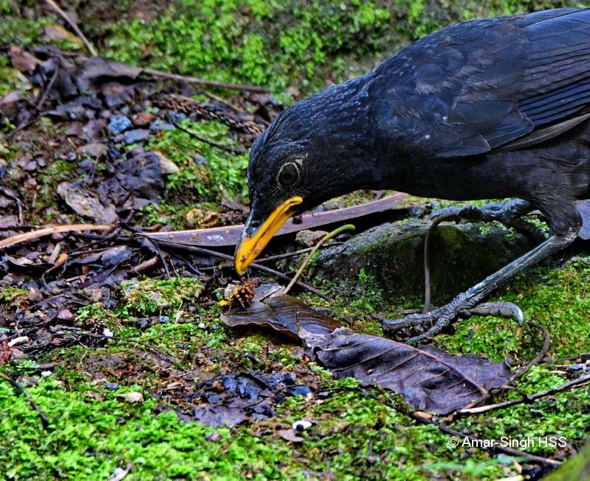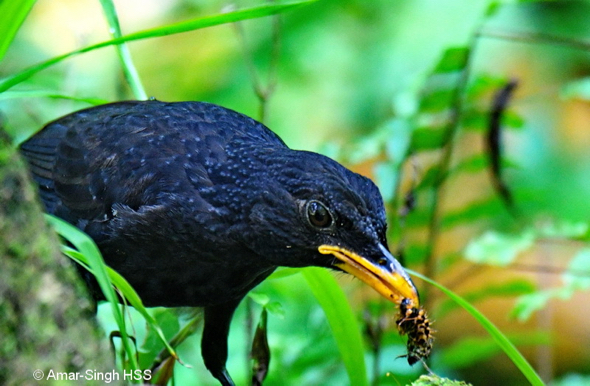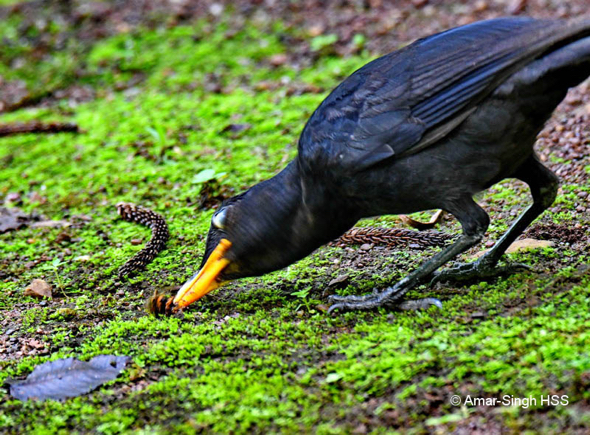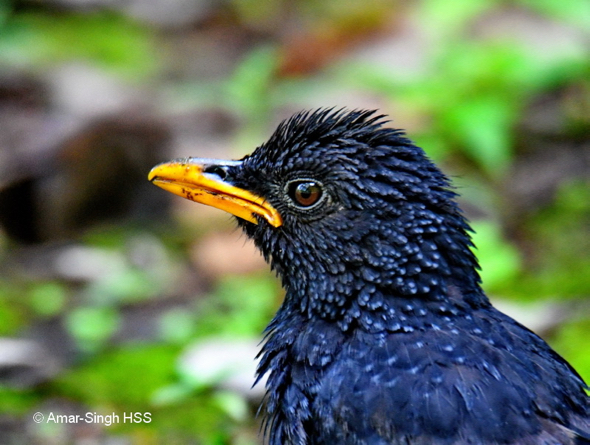“I have observed the Blue Whistlin-thrush (Myophonus caeruleus crassirostris) feeds on a large range of animal prey, especially invertebrates as well as fruit. Snails are particular favourite and often rocks are used to break the shell.
“I saw this bird feeding exclusively on these hairy, orange and black caterpillars (top, above).
“It took 5 in the space of 10 minutes. The bird did not seem to find them very palatable and spent time rubbing them in the dirt (above), possibly to reduce the ‘hairs’ sticking out.
“Even after feeding on them the bird would often gag a little, shake the head or raise it hackles and head feathers (above). This happened at almost every feed, giving the impression that it was unpleased to taste or swallow. The bird was cautious of me and was probably concerned I would steal its unpalatable grubs.”
Dato’ Dr Amar-Singh HSS
Ipoh, Perak, Malaysia
29th May 2018
Location: Ipoh, Perak, Malaysia
Habitat: Limestone outcroppings at outskirts of the city with secondary growth













One Response
Congratulations on the detail in the pictures Amar.
Though the bird in the picture has adult plumage, from the fleshy flanges on the side of the bill, it appears to be rather young. It also looks thin.
Young birds, which have to fend for themselves after they are no longer being fed by the parents, often take quite a while to learn how to do so properly.
This thrush was probably very hungry when it came across those caterpillars (which might have been ignored by other birds better at foraging), and simply gobbled them down whether they tasted good or not!